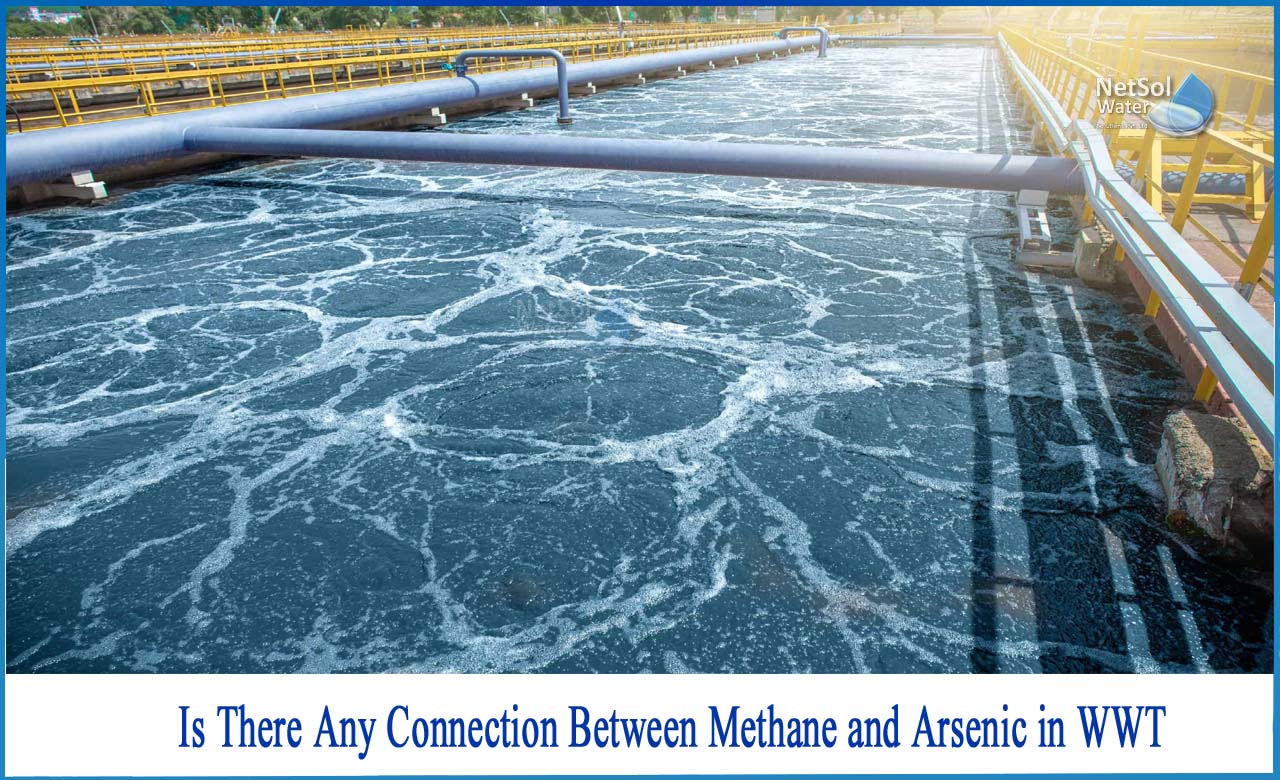Is there any connection between Methane and Arsenic in WWT?
Arsenic toxicity is now a widespread problem in many surface water and groundwater resources around the world, with widespread and tragic consequences for public health in many countries. When microorganisms "eat" toxic metalloid-containing substances, they release it into drinking water resources.
Contamination of groundwater with naturally occurring (geogenic) arsenic (As), is a serious issue that affects people all over the world. Many mechanisms such as mobilization from sediments to groundwater have been proposed, some more general than others for specific locations.
Many researchers hypothesized that the microbes that liberated arsenic from the soil feeded on algae and plant matter near the soil's surface. Most of the time, organic compounds trapped in deep sediments are fueling the process. The newly discovered supporting role of methane in the process is also surprising.
Widespread of Arsenic Poisoning
Arsenic contamination is a major issue in many areas.
The first cases of arsenic-related skin lesions were discovered in West Bengal and Bangladesh in the 1980s, and groundwater from tube wells was identified as the source. Developmental issues and cancer top the list of serious health risks associated with arsenic consumption.Such arsenic-related health outcomes are common on river floodplains in South and Southeast Asia, where populations rely on groundwater from shallow wells for survival.
Methane's Role in Arsenic Contamination
When the researchers discovered high levels of methane in arsenic-contaminated groundwaters, they wondered if the gas could be used as an energy source by bacteria that mobilize arsenic.
Methane is commonly found in arsenic-contaminated aquifers. The discovery of this new arsenic mobilization pathway, combined with the common co-occurrence of methane and arsenic in aquifers, leads to the strong conclusion that arsenic contamination of groundwater resources in Southeast and South Asia is most likely caused by microbial reductive dissolution of minerals in sediments.
The researchers hope that the discovery of the arsenic-methane link will be useful to scientists in their efforts to predict emerging arsenic contamination hot spots.
Strategies for Arsenic Remediation
Deeper public wells can provide better water to a larger population, but simply educating the local population can go a long way towards lowering exposure rates.
Treatment of arsenic-contaminated water can be costly and time-consuming. Arsenic is removed from water using a variety of technologies, including membrane filtration, oxidation, chemical precipitation, coagulation, ion exchange, and adsorption with specific media. When deciding which technology to use, decision-makers should consider several factors, including the quality of the source water, available space, disposal options for treatment byproducts, and, most importantly, the presence of other contaminants.
What can Netsol Water provide?
Netsol Water is a significant water and wastewater treatment firm in India, offering WTP, WWTP, STP, and ETP, RO Plant, Water Softener manufacture, among other services. We've made it our mission to save the planet. The company creates equipment’s and is committed to providing practical solutions that help businesses flourish and treat wastewater to the larger extent as possible, thus minimizing pollution of water.
Netsol Water is Greater Noida-based leading water & wastewater treatment plant manufacturer. We are industry's most demanding company based on client review and work quality. We are known as best commercial RO plant manufacturers, industrial RO plant manufacturer, sewage treatment plant manufacturer, Water Softener Plant Manufacturers and effluent treatment plant manufacturers. Apart from this 24x7 customer support is our USP. Call on +91-9650608473, or write us at enquiry@netsolwater.com for any support, inquiry or product-purchase related query.



